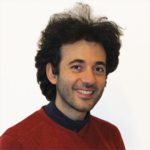Blog
Poverty measurements for policy makers
In order to reduce poverty you must be able to measure it. It sounds so obvious, but in my experience policy makers think that measuring poverty is either a completely ‘objective’ process, like measuring the temperature in the room, or a broadly flexible exercise that can easily be manipulated to obtain the desired outcomes. And even when the same approach to poverty measurement is used, significant differences remain in the actual process of poverty estimation.
As an example, UNU-WIDER and the University of Copenhagen helped to join more than twenty key figures from the research departments of ministries of several developing countries, who were involved in measuring poverty in their own countries, to work together to improve, complement or standardize their countries’ poverty measurement. It was an extremely enriching experience, through which I started to realize that the spectrum of approaches to poverty measurement is very wide.
During the past few years, we have helped to develop rigorous poverty estimation tools that build on the relevant literature and research, and at the same time explicitly take into account individual countries’ specificities. We noticed that measuring poverty in a rigorous but participative way, and using complementary methodologies, received far more attention by policy makers.
Indeed, measuring and understanding poverty is still a key objective for many developing countries’ policy makers, and I believe that providing them with good tools and knowledge is still a fundamental development goal.
The views expressed in this piece are those of the author(s), and do not necessarily reflect the views of the Institute or the United Nations University, nor the programme/project donors.
 Join the network
Join the network


